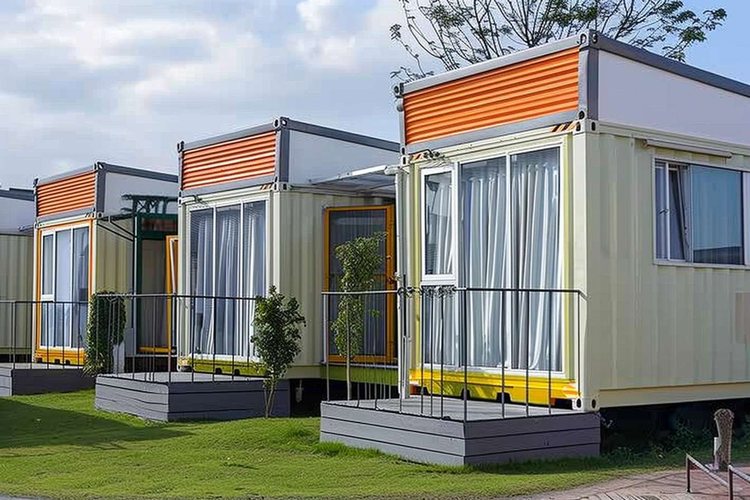Prefab Homes: Modern Living Solutions for Seniors & Families
Prefabricated homes deliver fast, affordable, and tailor-made housing options for retirees and families alike. Combining factory-built precision with flexible design, these homes offer accessible layouts, energy-efficient systems, and smart features. Discover how prefab homes can simplify maintenance, reduce costs, and support aging in place while providing modern comforts and sustainable choices for diverse lifestyles.

Why Prefab Bungalows Appeal to Seniors
Single-level prefab bungalows are increasingly attractive to older adults because they simplify daily life and reduce mobility challenges. These homes are often designed with universal-access features—wider doorways, zero-step entries, non-slip flooring, and strategically placed grab bars—that make moving around safer and easier. The one-floor layout eliminates the need to climb stairs, which is a major advantage for those with limited mobility or who want to age in place.
Beyond accessibility, many prefabricated designs emphasize low-maintenance finishes and efficient systems that cut down on chores and upkeep. Improved insulation, energy-efficient windows, and high-performance HVAC equipment help lower utility bills and reduce the time and expense associated with home maintenance—appealing factors for retirees who want to spend more time on hobbies and less on housework.
Customization and Contemporary Design Options
Modern prefab manufacturers offer a wide palette of customization choices that let homeowners create a space that matches their lifestyle. Buyers can select from multiple floor plans, rearrange room configurations, and pick exterior cladding, roofing materials, and interior finishes. Whether a buyer prefers a minimalist bungalow, a cottage-style layout, or a more contemporary aesthetic, prefab lines usually include a range of architectural themes.
Technology and sustainability are increasingly integrated into prefab packages. Smart-home controls, programmable thermostats, and integrated security systems are commonly offered as options, while energy-efficient appliances, solar-ready roofs, and responsibly sourced materials support long-term affordability and a smaller environmental footprint. These features help future-proof the home and can be especially attractive to families and seniors who want comfortable, modern living without sacrificing efficiency.
Cost Considerations and Market Comparison
Prefabricated construction can offer significant time and cost advantages compared with traditional stick-built homes, but pricing varies widely depending on size, finishes, and customization. Below is a generalized comparison of typical prefab project tiers and expected timelines.
| Home Type | Average Base Cost | Additional Features Cost | Timeline |
|---|---|---|---|
| Basic Prefab Bungalow | $80,000 - $160,000 | $20,000 - $40,000 | 3-4 months |
| Custom Prefab Home | $150,000 - $400,000 | $50,000 - $100,000 | 4-6 months |
| Luxury Prefab Design | $400,000+ | $100,000+ | 6-8 months |
Prices, rates, or cost estimates mentioned in this article are based on the latest available information but may change over time. Independent research is advised before making financial decisions.
When evaluating costs, factor in land purchase, site preparation (grading, utilities, foundation), permits, and delivery/installation fees. Custom finishes, higher-end appliances, and additional energy systems or accessibility upgrades will raise the final price. However, because much of the work happens in a factory-controlled environment, there are often fewer weather delays, tighter quality control, and a shorter overall schedule—savings that can offset some of the upfront costs.
How Prefab Construction and Installation Work
The prefab process typically runs on two parallel tracks: while the site is readied—foundation poured and utilities planned—the home’s modules, panels, or components are fabricated in a factory. This overlap dramatically compresses the overall timeline compared to sequential on-site building.
Once the site is ready, the completed sections are transported and lifted into place, then connected and sealed. Crews finalize mechanical systems, insulation, and interior finishes on-site until the home is move-in ready. With efficient coordination and fewer weather-related interruptions, many buyers find they can occupy a prefab home in months instead of the year or more common with conventional construction.
Quality Assurance, Codes, and Warranties
Prefabricated homes must comply with local building codes and safety standards just like traditional houses. Reputable manufacturers implement rigorous quality control procedures during fabrication—checking structural connections, material tolerances, and component performance at each stage. These inspections help ensure consistent construction quality and reduce the likelihood of post-installation problems.
Most established builders also provide warranties that cover the structural shell and various systems or components for a defined period. Buyers should carefully review warranty terms, what’s covered, and who is responsible for service after installation. Additionally, municipalities or lenders may require inspections or certifications at specific milestones, so it’s important to understand local regulatory requirements early in the planning process.
Making the Right Choice for Seniors and Families
Prefabricated homes present a compelling mix of affordability, customization, and speed—qualities that benefit both seniors and families. For older adults, accessible single-story designs, lower maintenance demands, and the option to add safety features make prefab bungalows a practical choice for independent living. Families gain flexibility in layout, scalable options for growing needs, and energy-saving systems that reduce long-term living costs.
As manufacturing methods, materials, and smart-home integrations continue to improve, prefabricated housing is likely to play a larger role in meeting diverse housing needs. For those considering a prefab solution, the best approach is to research manufacturers, visit completed projects, request detailed cost breakdowns, and confirm local code compliance and warranty protections. With the right planning, a prefab home can deliver modern comfort, accessibility, and value for years to come.






